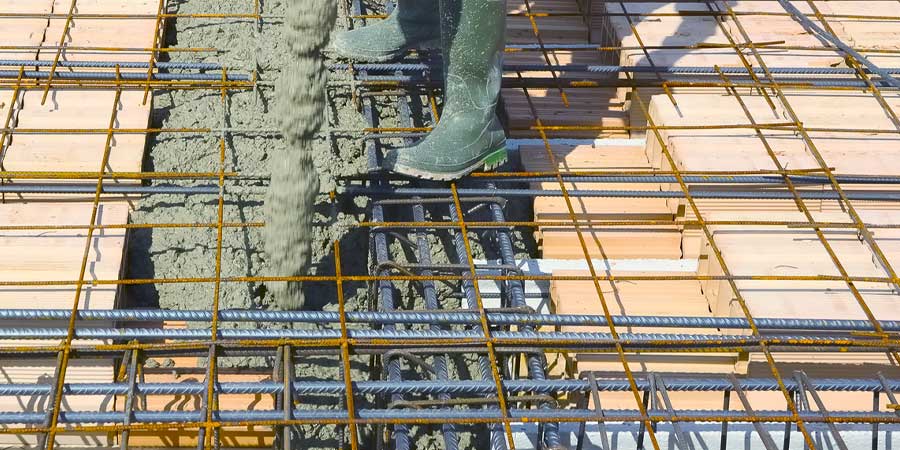Protecting steel in concrete

Corrosion of reinforcement and other embedded steel elements is the leading cause of deterioration and loss of durability in concrete structures. As corrosion progresses, the rebar expands in volume, further exacerbating the cracking of concrete and frequently resulting in spalling of the protective cover concrete. This leads to further loss of durability at an increasing rate.
Although steel has an inherent tendency towards corrosion, due to the high pH of concrete, the steel within concrete is surrounded by a natural layer of iron oxide that protects it from rusting. However, in coastal areas and those where de-icing salts are used, chloride ions from the saltwater or deicing chemicals reach the steel and breach the protecting layer of iron oxide.
With the loss of the protective passivating layer provided by the concrete, the steel reinforcement is significantly more susceptible to the initiation of corrosion. Once initiated, the concrete frequently deteriorates rapidly within the proceeding decade, requiring maintenance, repair, and frequently ultimately replacement.
This is why corrosion protection methods are necessary for oceanfront structures, pavements and parking decks in areas where salt is used to treat traffic surfaces, and in precast elements and bridge structures. However, not all corrosion protection methods work the same way. Below are three questions to ask before selecting your corrosion protection.
1. How does the corrosion protection work? Many products use a cathodic type of corrosion protection based on zinc salts, calcium salts, magnesium salts, or polyphosphates that slow down the corrosion rate. Typically, a highly skilled tradesman is needed for these types of systems, as they must follow a detailed installation process to ensure it’s done properly. There are a lot of ways for things to go wrong. Cathodic corrosion protection also requires routine maintenance, adding ongoing cost.
A more cost-effective solution is to use a corrosion inhibiting admixture such as DCI® or DCI®-S (classified as an ASTM C494 Type C admixture). DCI® and DCI®-S are added at the batch plant, so there’s no extra labor or time involved. This simple method of addition ensures proper application, protecting embedded steel and other metals.
2. Does the corrosion protection affect concrete strength and/or set time?
Calcium nitrite helps mitigate corrosion, but sometimes at the expense of 28-day compressive strength and slump loss since it acts as efficient set accelerator. A way to mitigate this added complexity is to use a neutral set admixture that will minimise these impacts on strength, slump loss and set time. Unlike alternative admixture solutions, DCI®-S is a patented, calcium nitrite-based corrosion inhibitor that provides set-neutral protection.
3. How long has the corrosion inhibitor been on the market and what data do they have to substantiate expected performance?
It’s helpful to know that the solution you choose has been around for a long time and has been proven in the market. GCP’s DCI family of corrosion inhibitors have a track record of more than three decades in the field of corrosion protection. This knowledge is beneficial for ensuring the right dosage rate to achieve the desired service life for the structure.
The addition of DCI® or DCI-S corrosion inhibitor to reinforced or prestressed concrete significantly extends the service life of a structure.
Tags
- Building Envelope Solutions
- Commercial buildings
- Concrete
- Contractor
- DCI®
- Distributor
- Owner
- Residential buildings
- Structural Solutions
- Sustainability